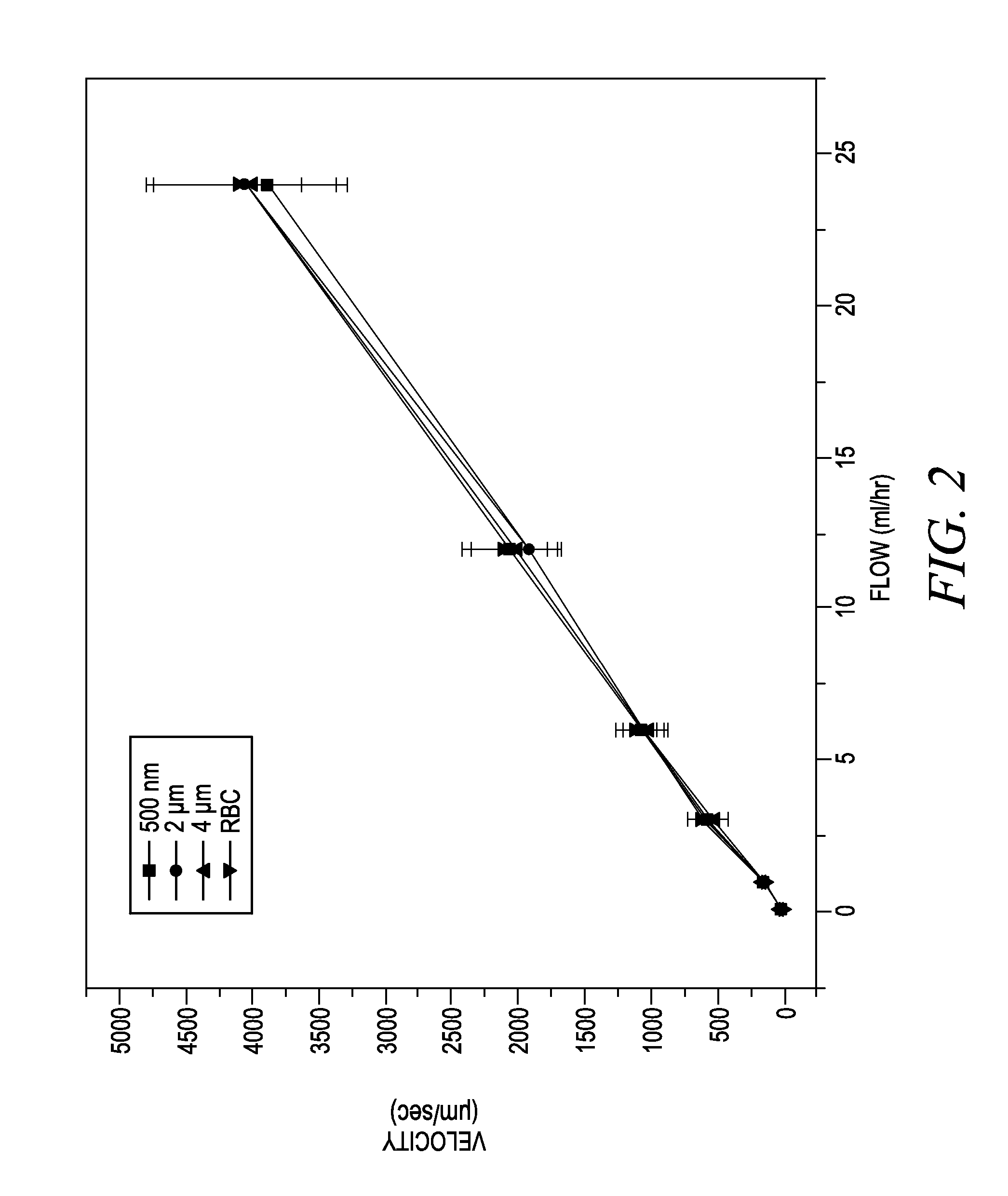Uniform fluorescent microsphere with hydrophobic surfaces
a fluorescent microsphere and hydrophobic surface technology, applied in the field of fluorescent microspheres, can solve the problems of aggregates, inability to freely flow through the blood stream without being obstructed, etc., and achieve the effects of minimizing interactions with other blood components, maximizing plasma half-life, and improving bioavailability of particles in blood circulation
- Summary
- Abstract
- Description
- Claims
- Application Information
AI Technical Summary
Benefits of technology
Problems solved by technology
Method used
Image
Examples
example 1
Preparation of 0.1 μm Microspheres with NIR Emission (715 ex / 755 em)
[0253] The staining solution is prepared by adding 700 μL of the dye stock (BODIPY® 670 / 735 [difluoro(1-((3-(2-(5-hexyl)thienyl)-2H-isoindol-1-yl) methylene)-3-(2-(5-hexyl) thienyl)-1H-isoindolato-N1,N2)boron] 10 mg / mL stock solution in CH2Cl2) to a 10 mL glass test tube, adding 300 μL of CH2Cl2, and mixing. 2 mL of Ethanol is then added and sonicated for 30 second to ensure complete mixing. The microspheres are loaded with dye by first adding 10 ml of a vortexed microsphere stock (0.11 μm sulfate polystyrene microspheres (0.1 μm), 8.1% solids, with surface charge content of 6 μEq / g (measured from conductometric titration)) to a 250 ml round bottom flask and then slowly adding 14 mL of methanol and stirring for 5 minutes. The staining solution is added dropwise to the stirred microsphere suspension and incubated for 30 minutes with continual stirring. The organic solvents are evaporated in a BUCHI R-124 vacuum eva...
example 2
Preparation of 2 μm Microspheres with NIR Emission (715 ex / 755 em)
[0255] These fluorescent microspheres are prepared essentially as in Example 1, except that 1.1 mL of dye stock is added to the 10 ml tube and the microsphere stock is 2.0 μm sulfate polystyrene microspheres (8.1% solids, with surface charge content with surface charge content of 6 μEq / g (measured from conductometric titration)).
Methods:
[0256] Studies of blood flow regulation have focused on the accurate description of the velocity field because other flow property calculations follow directly from these measurements. To obtain a detailed description of the velocity field in the microcirculation, conventional velocimetry techniques consider the field to be composed of a very large number of particles (Raffel et al., 2000; Westerweel, 1997). The spatial displacement of these particles in two separate images provides a measurement of the instantaneous in-plane velocity vector field (Adrian, 1984; Adrian, 1991). Thes...
PUM
 Login to View More
Login to View More Abstract
Description
Claims
Application Information
 Login to View More
Login to View More - R&D
- Intellectual Property
- Life Sciences
- Materials
- Tech Scout
- Unparalleled Data Quality
- Higher Quality Content
- 60% Fewer Hallucinations
Browse by: Latest US Patents, China's latest patents, Technical Efficacy Thesaurus, Application Domain, Technology Topic, Popular Technical Reports.
© 2025 PatSnap. All rights reserved.Legal|Privacy policy|Modern Slavery Act Transparency Statement|Sitemap|About US| Contact US: help@patsnap.com



